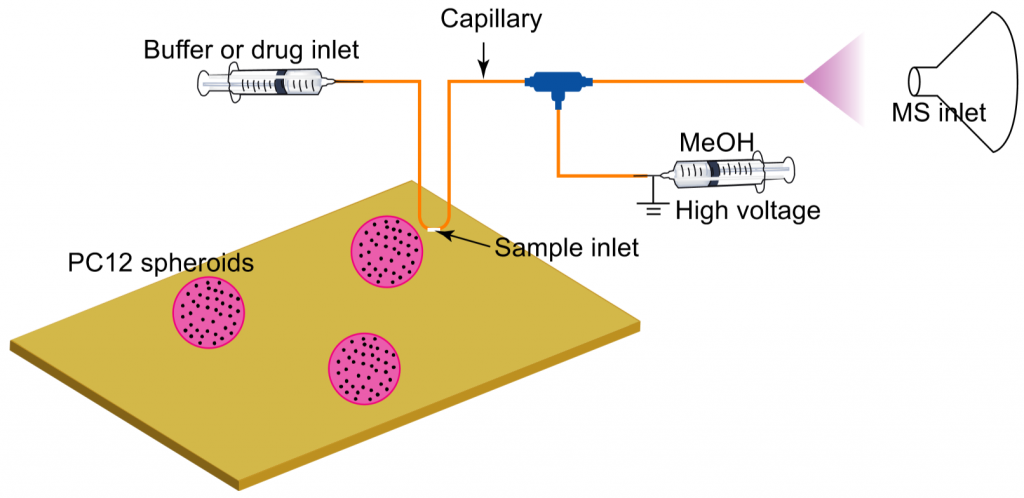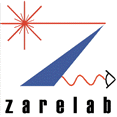Monitoring of Neurochemical Release from PC-12 Cells Using Ambient Ionization Mass Spectrometry
Dan Gao, Sarah E. Noll, Maria T. Dulay
Neurotransmitters are involved in a variety of physiological process, including memory, learning, and response to disease. Among which, dopamine is a catecholamine neurotransmitter that functions as a chemical messenger in synaptic communication between cells. Some neurogenic diseases like Parkinson’s disease were caused by a shortage of dopamine. Therefore, cell-based therapy for Parkinson’s disease using dopaminergic cells has attracted an increasing attention. Recently, several methods have been developed for screening and evaluating the function of dopaminergic cells. PC-12 cells obtained from rat pheochromocytoma cells are often used as a model. In conventional dopamine release assay, PC-12 cells are stimulated by high concentration of K+ which simulates cell depolarization and induces the release of dopamine by exocytosis. Several analytical methods have been developed to evaluate neurotransmitters released from cells, such as UV, HPLC, electrochemical, and fluorescence techniques. However, mass spectrometry is a powerful tool for cell release assay because of its high sensitivity, label-free, multi-analyte analysis, and the ability to elucidate the molecular structures of the analytes. Therefore, the aim of the project is to develop a PC-12 cell culture platform with online mass spectrometry detection system for real time monitoring neurochemical release from PC-12 cells. L-3,4-dihydroxyphenylalanine (LDOPA) is a dopamine precursor that is used as a drug for treating Parkinson’s disease. Reserpine inhibits vesicular monoamine transport by displacing catecholamine from neurotransmitter vesicles. I want to use the established platform to evaluate the effects of the dopaminergic drugs L-DOPA and reserpine on K+-simulated dopamine release from 3D PC-12 spheroids. The established platform will be useful for the evaluating the effects of a variety of drugs and chemicals on the release of dopamine from spheroids. Several researches have showed that the cell culture models have influence on the dopamine release. Therefore, we also want to investigate the differences between the release of dopamine from PC-12 cells, PC-12 spheroids, and PC-12-fibroblast co-culture system.

Figure 1. The schematic diagram of PC-12 cell culture platform with online mass spectrometry detection system for real time monitoring of neurochemical release from PC-12 spheroids.
